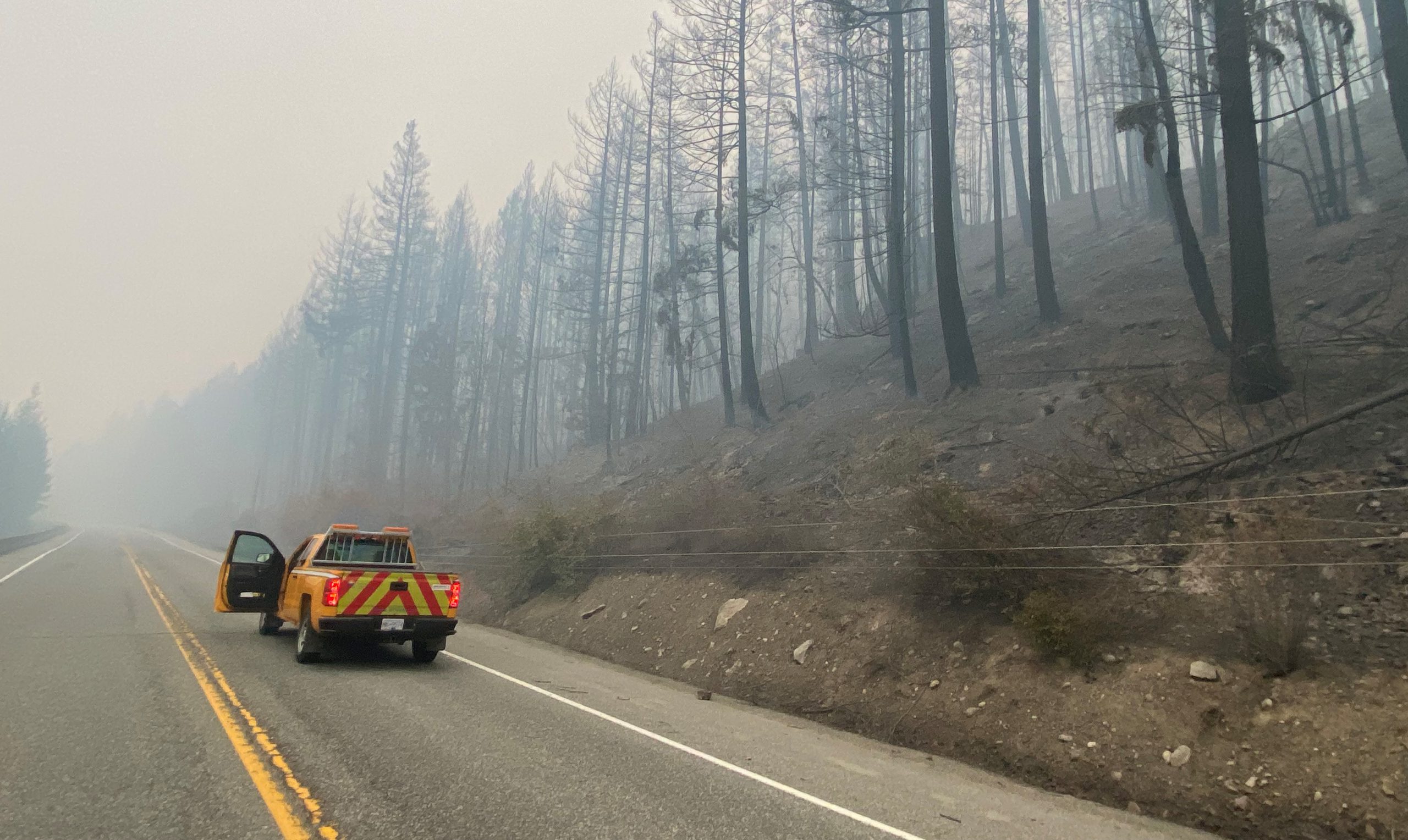
In our province, we’ve seen how wildfires can be extremely impactful. For example in 2017, the wildfires that ravaged the interior of BC were the worst our province has ever seen.More than 1,200,000 hectares of the province were impacted by wild fires – surpassing the 1958 record of 856,000 hectares. At the peak of the emergency – thousands of people were evacuated from their homes, many vital sections of our transportation network were closed and a thick blanket of smoke hung across our province – giving us all some perspective of just how much of BC was burning.
As the ministry responsible for a safe and efficient transportation network in BC, our job in an emergency like this is to safely manage that network during a time when many of our highways are active evacuation routes or impacted by fire related closures. During emergencies we work closely with many other levels of government – provincial, federal and municipal – that also have crucial roles to fill.
Here’s a breakdown of our role in battling BC wildfires:
We’re Part of a Bigger Picture
The provincial All Hazards Plan outlines BC’s response plan during emergency or disaster. Its structure is based on the Incident Command System and requires collaboration and information sharing across all levels of government and supporting agencies, so that planning and action can be taken to support those on the front lines.
Early in July, the Province and many of the local governments impacted by wildfire declared provincial and local states of emergency. Doing this activated the BC Emergency Program Act which allowed the Province to take additional measures to protect the health and safety of people and property.
In a wildfire emergency, the BC Wildfire Service leads by providing emergency response on behalf of the province – with staff from across BC, Canada, Mexico, and Australia staffing fire centres, incident command posts, and on the front lines fighting fires.
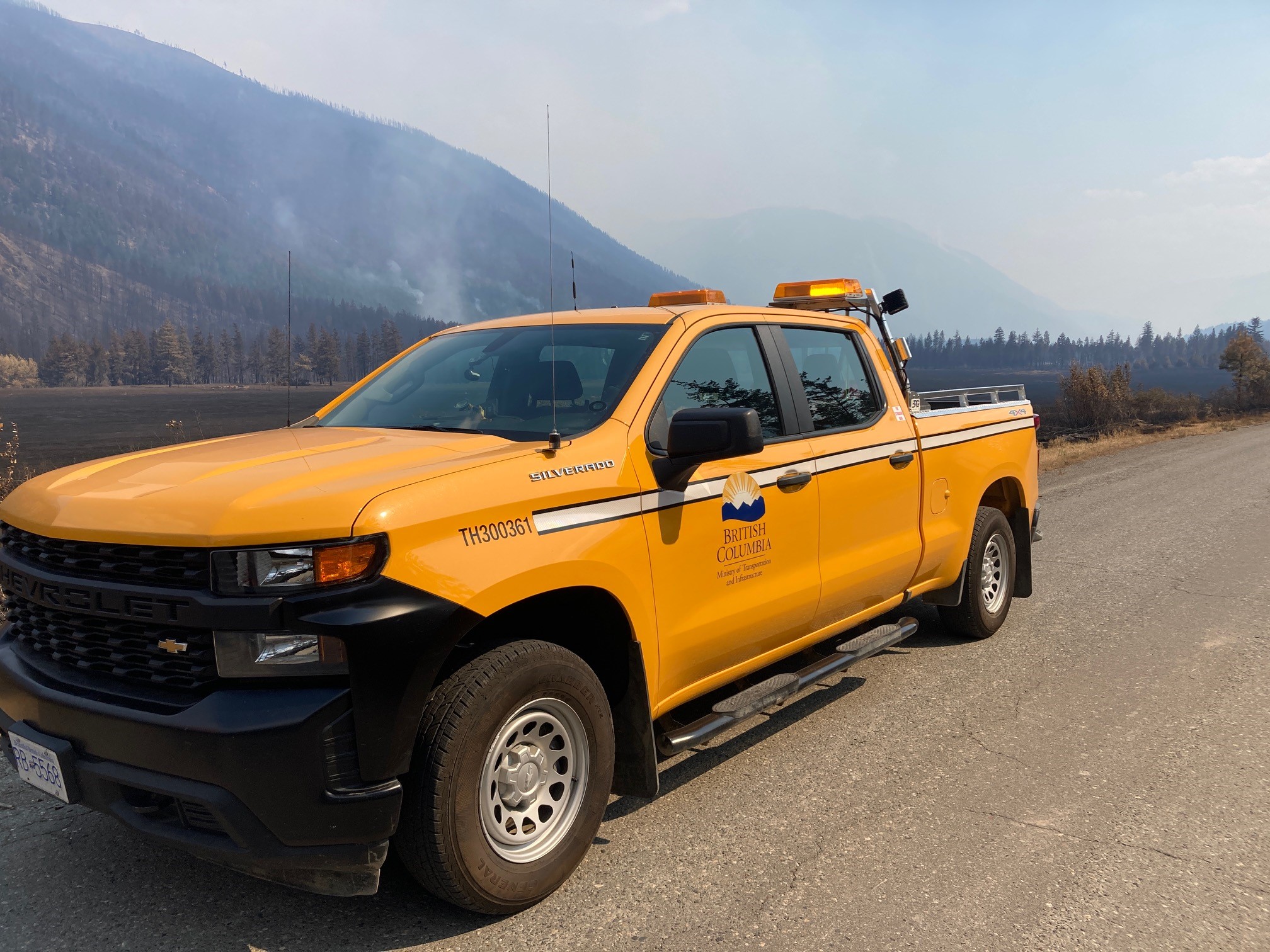
Our Piece of the Puzzle
We’re involved at all levels of response during a wildfire emergency – from staff in the field working with fire incident commanders through to high level executive and media briefings. Here’s a list of some other things we take on:
- We work closely with our maintenance contractors to support closures, help with evacuations and coordinate piloting vehicles
- We enhance Commercial Vehicle Safety Enforcement (CVSE) patrols on key routes to ensure safety and minimize risk of closure
- We represent the ministry in the Fire Centre, at the Regional District Emergency Operations Centre and in the Provincial Emergency Coordination Centre
- We develop evacuation (and re-entry) traffic management plans
- We update DriveBC and overhead reader boards with key information
- We assess our fire affected routes for rock and slope stability and danger tree hazards
- We share information with other agencies to support decision making on the ground
- We participate in public meetings to share information with evacuated residents
- We map closures and impacted routes and share that information with the public online through this blog, on our social media platforms such as Twitter, Facebook, Instagram and on DriveBC
- We work with the BC Cattlemen’s Association to help repair damaged livestock fencing
When Evacuation Orders Happen
We do everything we can to keep wildfires under control and the travelling public safe; but sometimes, evacuation is the only option. Here’s how the decision is made and how we help:
- Wildfire Management Services is the Incident Command recommending alerts and orders to Local Governments (Regional Districts, First Nation Communities, Municipalities)
- Local Governments subsequently issue evacuation alerts or orders The ministry is involved in discussion about the orders, their locations, and the impact on our transportation network so that we can manage traffic and message to the public
- RCMP are then tasked with informing residents, enforcing orders, and managing re-entry so that people’s homes are safe from looting and crime
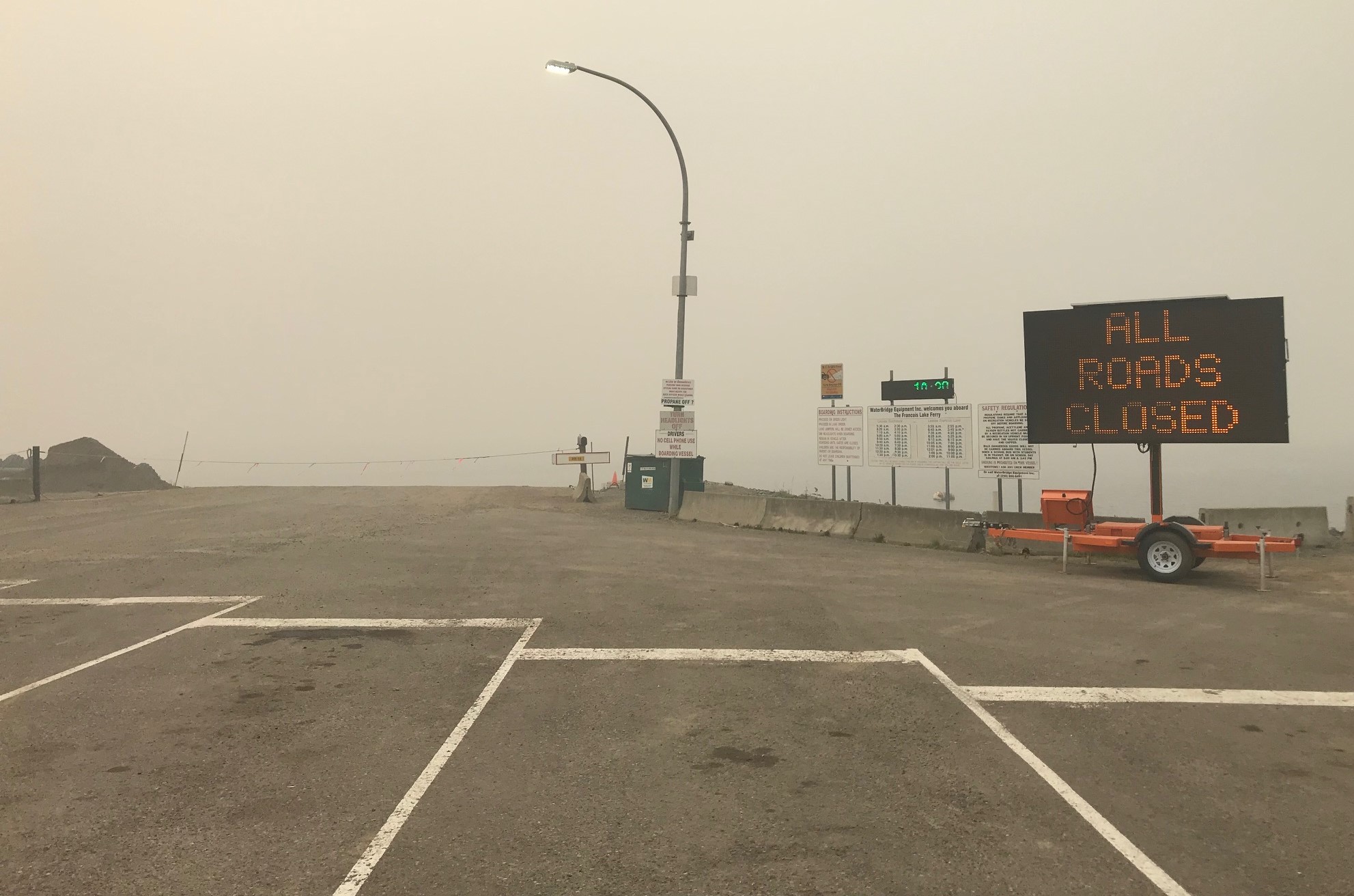
When Highway Closures Happen
Wildfires are dynamic and unpredictable by their very nature. This means that they do not follow the rules of the road and sometimes, we need to close our highways to keep travellers safe.
There are 3 main reasons we will close a road during a fire emergency:
- Wildfire Management Services recommends closure because of fire activity next to or on the highway,
- We need to support local government’s evacuation orders, and
- Our staff make decisions about closing roads due to visibility or operational safety
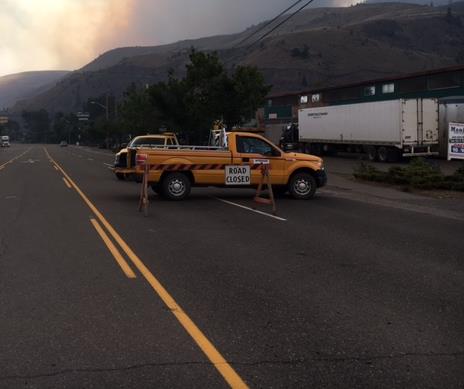
Levels of Response Explained
There are three levels of support and coordination during an emergency in BC.
- The first level of response (and often the front line of the emergency) occurs at Local Emergency Operations Centres (EOC).
- The second level of response is a regional one. If emergencies occur over a wide spread area (Central, South East, Northern etc.), response is grouped into regions called Provincial Regional Emergency Operations Centres (PREOC)
- Large scale emergencies require an overarching provincial centre for coordinating provincial as well as federal responses. This is called the Provincial Emergency Coordination Centre (PECC), led by Emergency Management BC.
This is a very high level review, but we hope you get the picture. The bottom line is we aren’t doing it alone. During a crisis, everyone in BC has a role to play. Thanks to everyone who steps up to the challenge during our wildfires – we couldn’t do it without you.
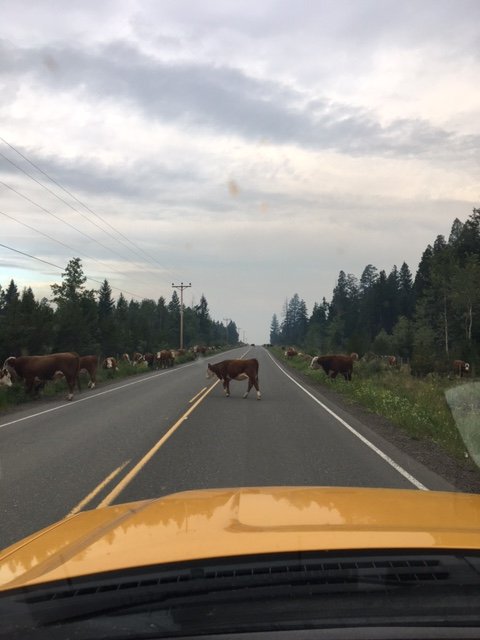
Join the discussion